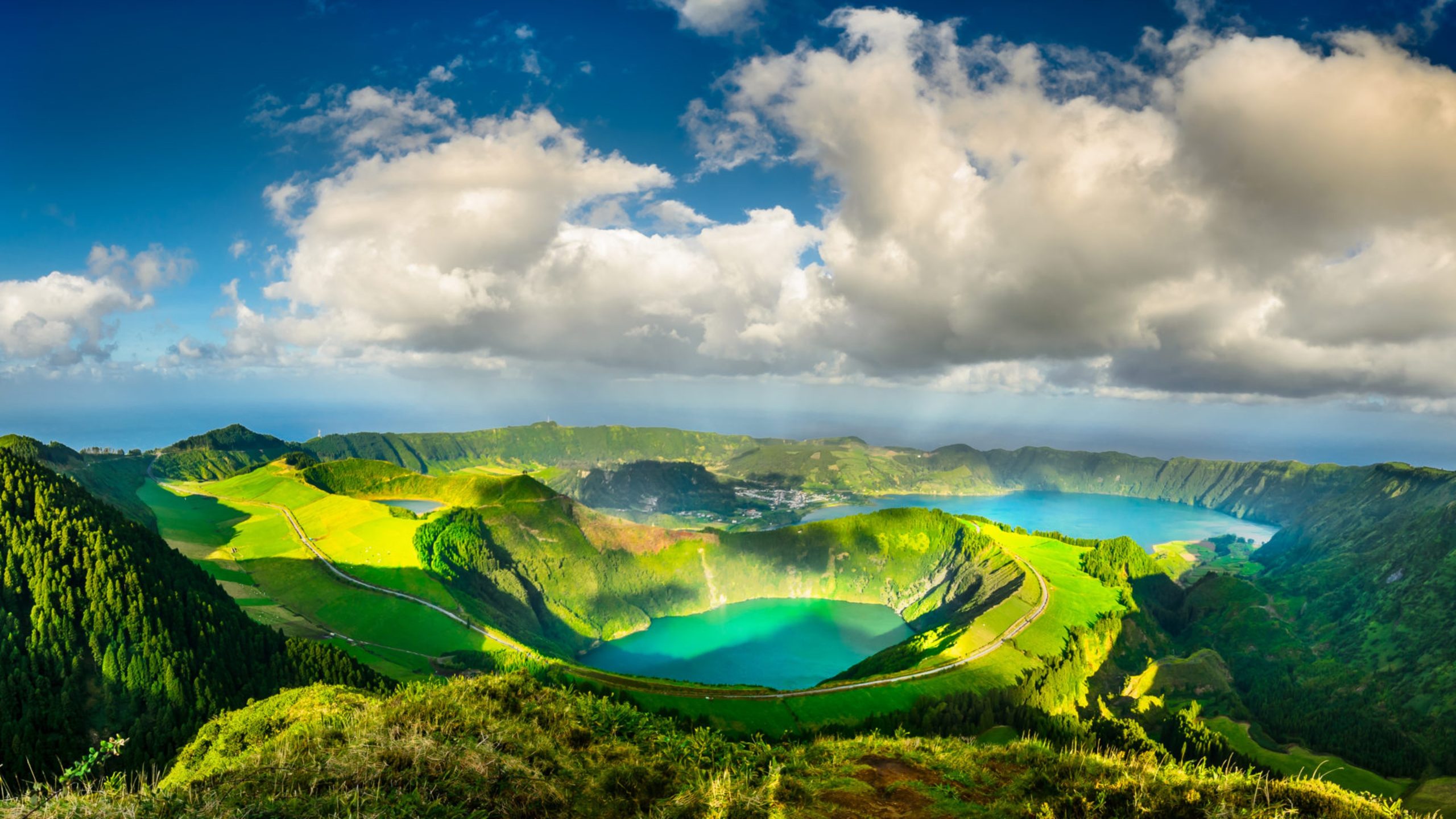The Azores archipelago is located in the Atlantic Ocean, 1403 km from the coast of Portugal, 880 km from Madeira, and effectively halfway between Italy and North America.
Comprising 9 islands, all of volcanic origin, they are divided into three geographical groups: Graciosa, Terceira, São Jorge, Pico, and Faial in the central part, Flores and Corvo to the west, and São Miguel and Santa Maria to the east.
An oasis of rare beauty in the vastness of the ocean. Often the Azores remain a hidden treasure for many travelers.
The Azores are not just a beach destination, but have much more to offer; they are indeed an excellent choice for those seeking an adventurous vacation, with numerous activities to practice and things to do on each of the islands.
The volcanic origin of the Azores has ensured that the archipelago shows a series of peculiarities and natural phenomena, unique in its kind. Each island, moreover, is distinguished by a characteristic different from the others, so as to increase its charm even more.
USEFUL INFORMATION
- DOCUMENTS AND VISAS: Always travel with a valid identification document (passport or identity card valid for travel)
- VACCINATIONS: None
- CURRENCY: Euro
- TIME ZONE: Compared to Italy, it is two hours behind. For example, when it is noon in Italy, it is 10 in the morning in the Azores
- CLIMATE: The climate of the Azores is subtropical oceanic, cool, rainy, and windy for many months and pleasantly warm in summer.
The Azores archipelago, which constitutes an autonomous region of Portugal, is located in the middle of the Atlantic Ocean at the same latitude as Sicily and Calabria; the influence of the ocean, however, makes the climate even milder than it is in our southern regions, especially in summer, which in these islands is cooler. Some of the islands are crossed in the interior by hilly or mountainous reliefs. The highest peak is Mount Pico, on the eponymous island; it is a volcano 2,351 meters high, which is also the highest mountain in Portugal. The slopes of the mountain are often covered by clouds and are very rainy, while the summit in winter and spring can be covered with snow.
BEST TIME TO VISIT:
The best time to visit the Azores is in summer, especially in July and August, which are the warmest and sunniest months. Having an oceanic climate, the Azores are affected by the delay in which the sea warms up, so September is slightly warmer than June, and in terms of temperatures, it is still a summer month, although in the course of the month, rains become a little more frequent. In July and August, temperatures are pleasant, sunshine is discreet, rains are not very frequent, while June is a little cooler and cloudier.
WHAT TO PACK:
- In winter: mid-season clothes, sweater, jacket, raincoat.
- In summer: light clothes, but also a sweatshirt or sweater, a light jacket, and an umbrella.

